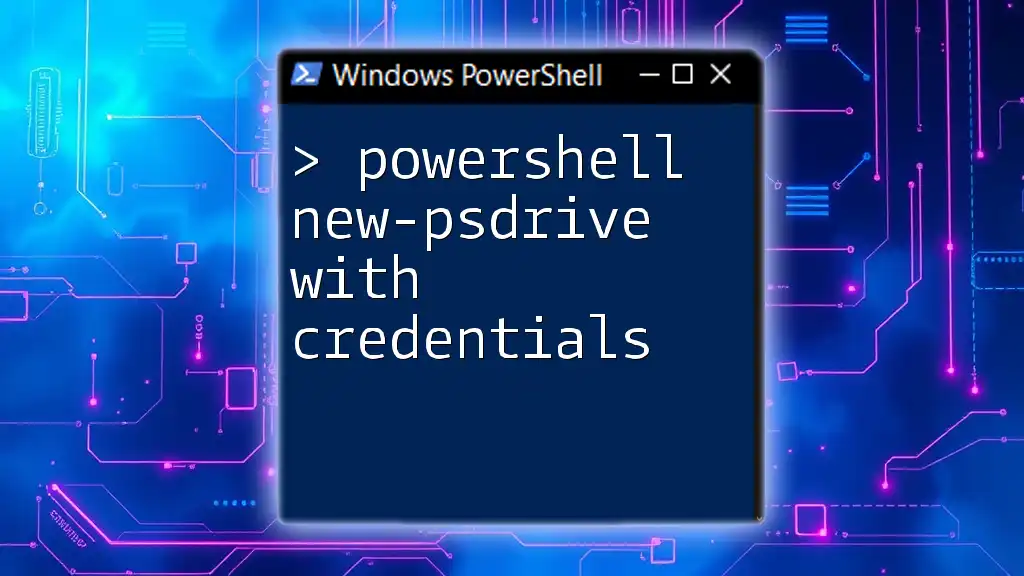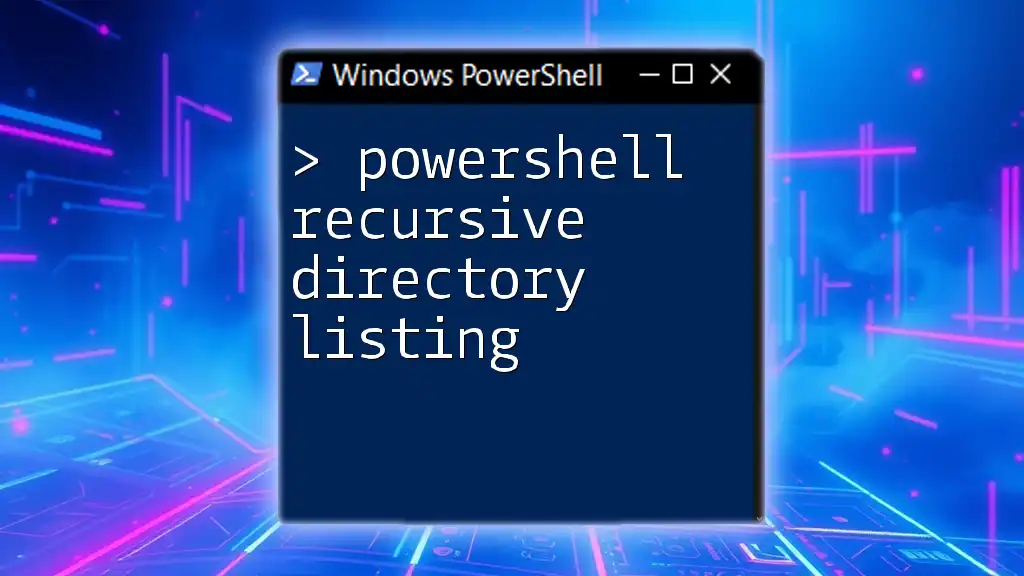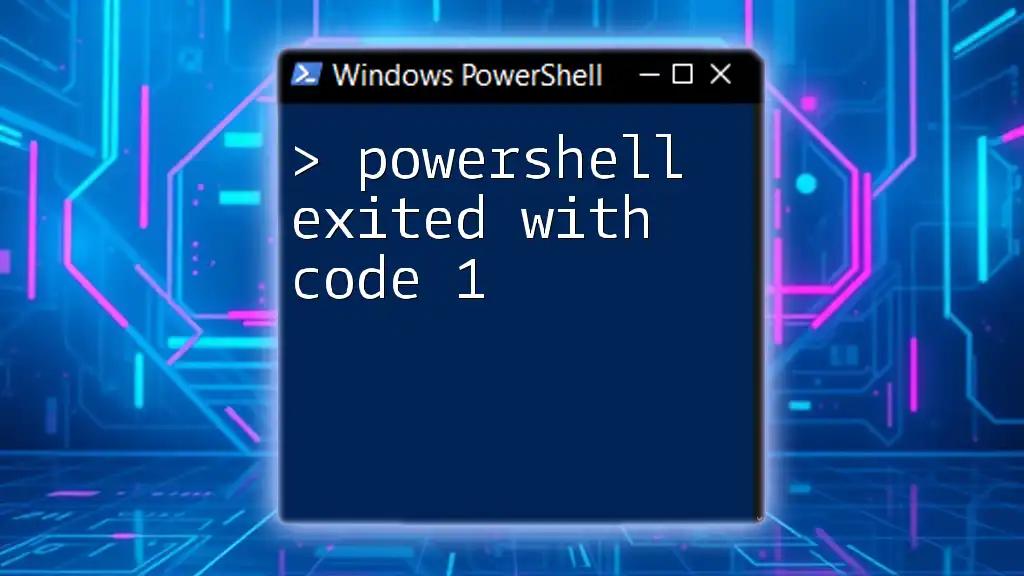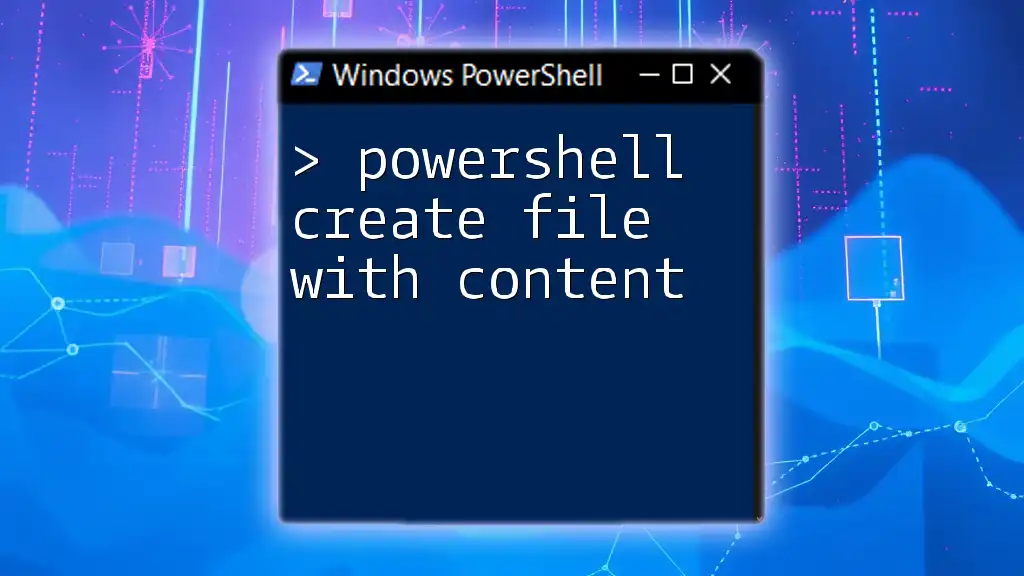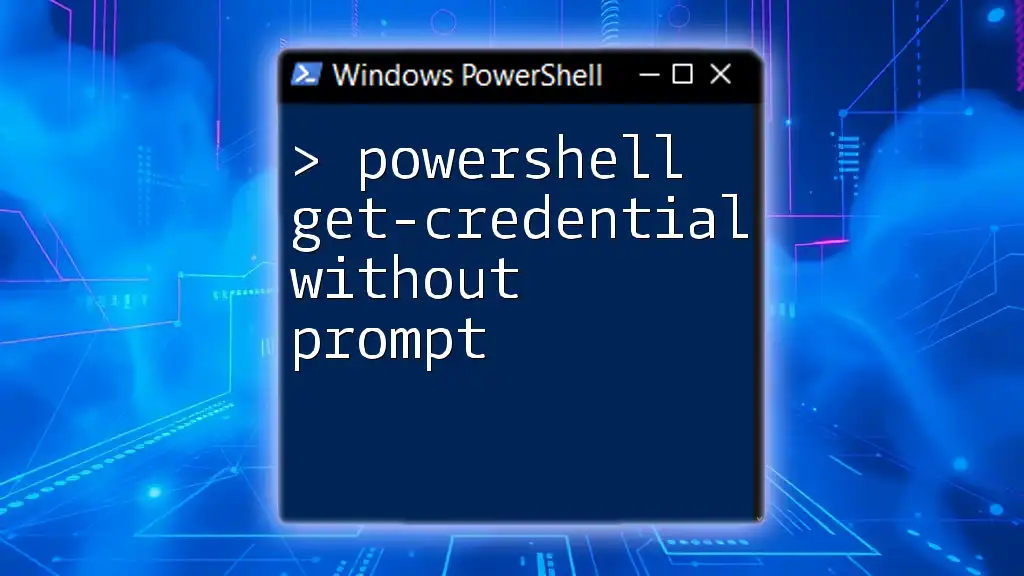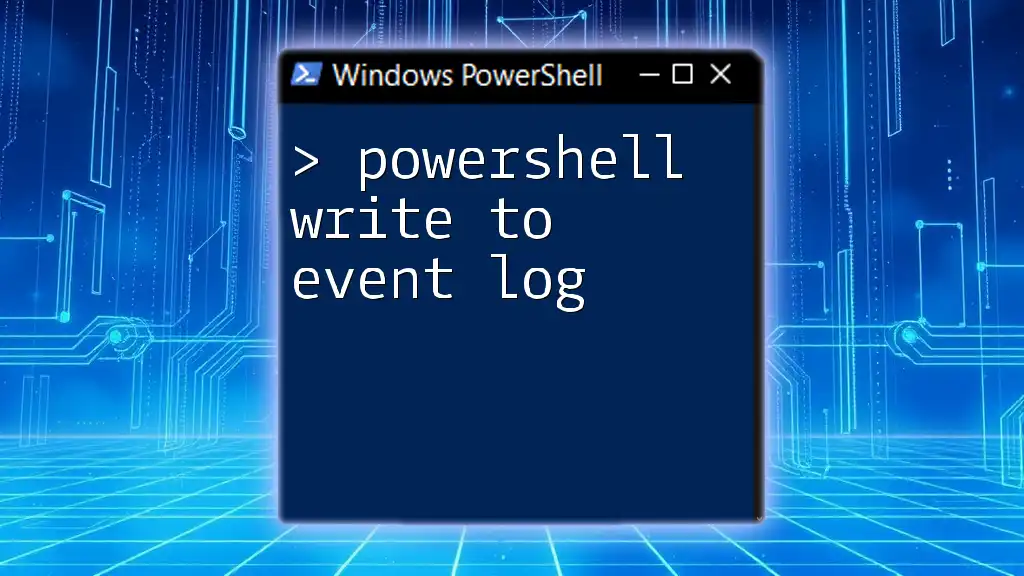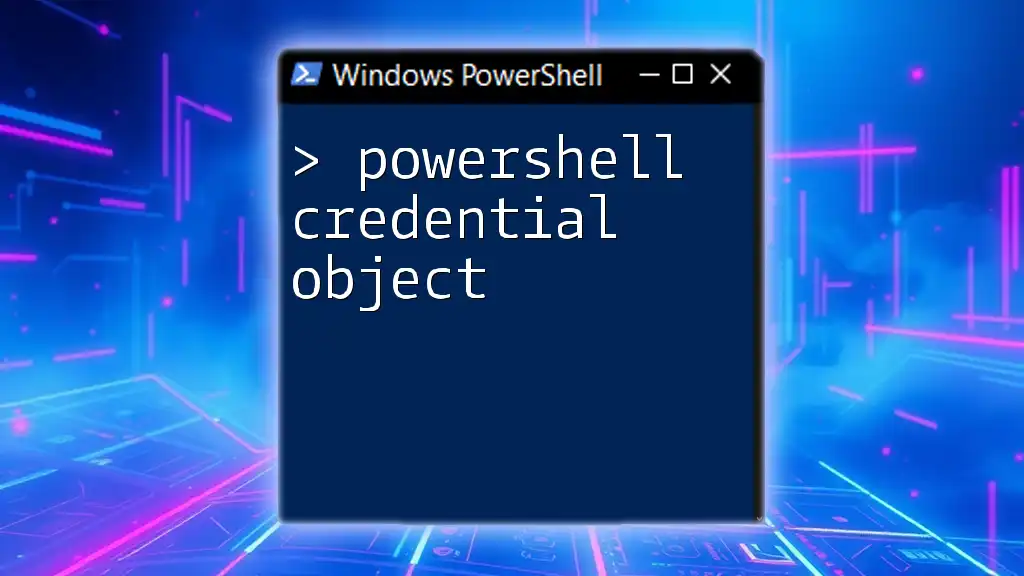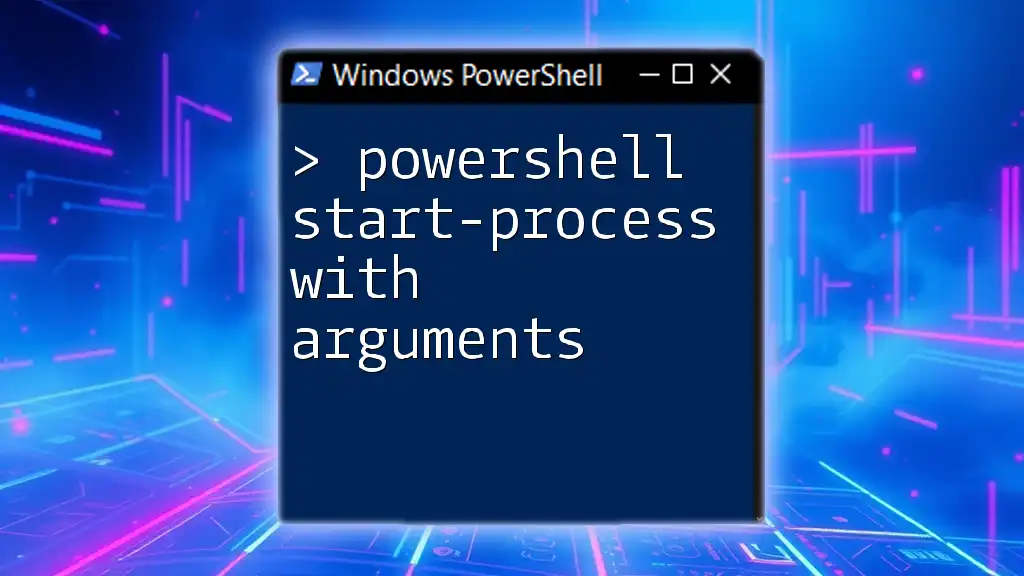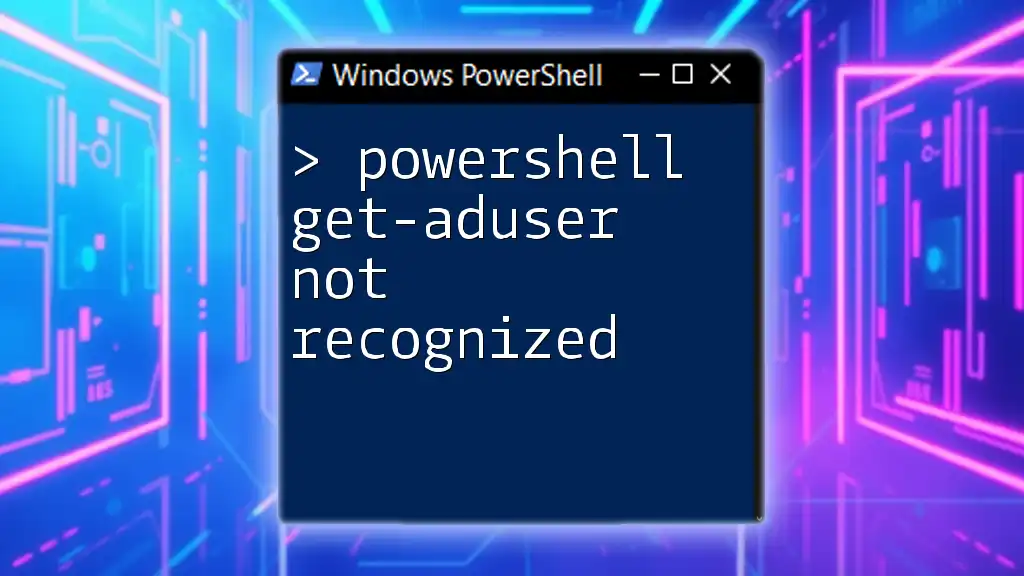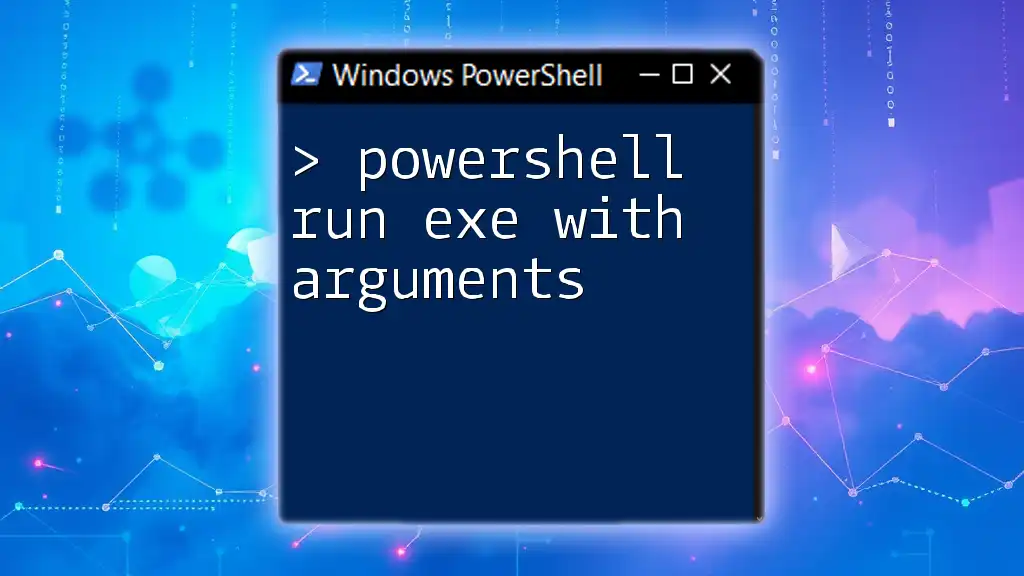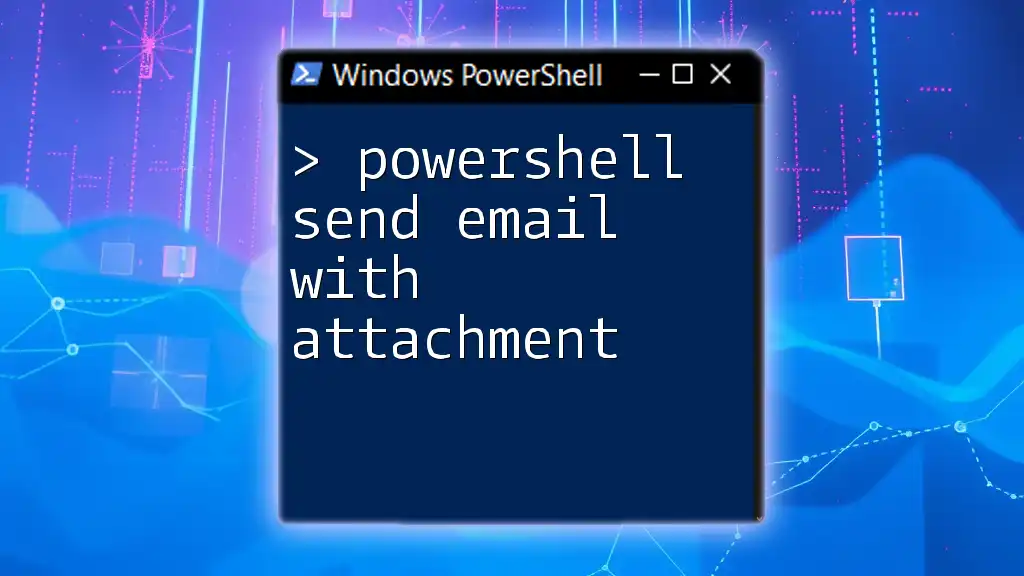The `New-PSDrive` cmdlet in PowerShell allows you to create a new drive mapping that includes credentials for accessing a network location securely.
Here's a code snippet to illustrate how to use it:
$credential = Get-Credential
New-PSDrive -Name "N" -PSProvider FileSystem -Root "\\Server\Share" -Credential $credential
Understanding PSDrive
What is a PSDrive?
A PSDrive in PowerShell is a virtual drive that provides an interface to various data stores, such as file systems, registry keys, and more. It essentially allows PowerShell to treat these data stores like traditional drives, making it easier to navigate and manage resources.
Why Use New-PSDrive?
Creating a new PSDrive can be beneficial in several scenarios. For instance, when you need to:
- Access network locations
- Facilitate easier management of scripts by abstracting paths
- Isolate different types of resources logically within a session
Some common use cases include mapping network shares or accessing specific registry keys easily. Using `New-PSDrive`, you can create temporary or persistent mappings to resources, enhancing your workflow.
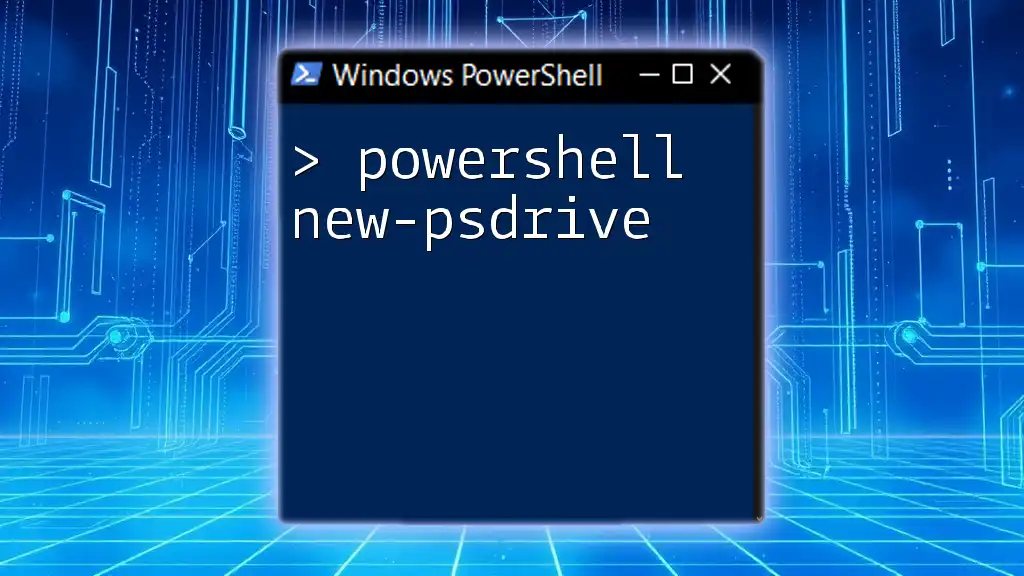
Setting Up Credentials in PowerShell
Types of Credentials
In PowerShell, you may encounter different types of credentials when connecting to resources. The most common are:
- User Accounts: These represent individual users and their permissions.
- Service Accounts: Designed for running applications and services, they often have more specific, limited privileges.
Storing Credentials Securely
Before using `New-PSDrive` with credentials, it’s crucial to manage your credentials securely. The `Get-Credential` cmdlet allows you to prompt for credentials in a secure manner:
$credential = Get-Credential
This command securely prompts the user for their username and password, ensuring sensitive information is not stored in plain text.

Using New-PSDrive with Credentials
Syntax Overview
The `New-PSDrive` cmdlet has a straightforward syntax but several parameters that you can utilize. Here’s the general format:
New-PSDrive -Name "<DriveName>" -PSProvider <ProviderType> -Root "<RootPath>" -Credential <PSCredentialObject>
In this command:
- `-Name`: Specifies the name of the new PSDrive.
- `-PSProvider`: Indicates the type of provider (e.g., FileSystem, Registry).
- `-Root`: Specifies the root location of the drive.
- `-Credential`: Provides the credentials required to access the resource.
Creating a PSDrive with Credentials
Basic Example
To create a new PSDrive using credentials, you could use the following simple example:
$credential = Get-Credential
New-PSDrive -Name "MyDrive" -PSProvider FileSystem -Root "\\NetworkPath" -Credential $credential
In this example:
- The `Get-Credential` cmdlet collects the user's credentials.
- `New-PSDrive` then establishes a new drive named "MyDrive" that points to a network path using the provided credentials.
Advanced Example with Error Handling
To improve robustness, you should also implement error handling. Here’s how you can do it:
try {
New-PSDrive -Name "MyDrive" -PSProvider FileSystem -Root "\\NetworkPath" -Credential $credential -ErrorAction Stop
} catch {
Write-Host "Error: $_"
}
In this snippet:
- A `try/catch` block is used to handle potential errors gracefully. If an error occurs during the `New-PSDrive` command execution, the error message is captured and displayed to the user.
- This practice enhances reliability and provides feedback about what went wrong.
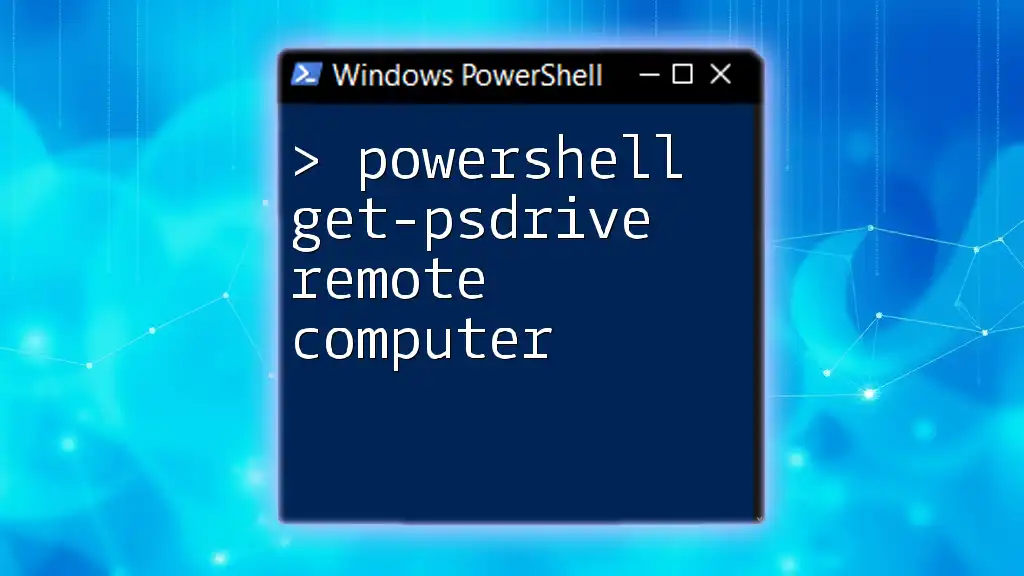
Best Practices for Using New-PSDrive
Managing Credentials
Proper credential management is vital for security. Avoid hard-coded credentials in scripts. Instead, always use the `Get-Credential` cmdlet or secure vaults to maintain credentials securely. Periodically review and rotate credentials to minimize security risks.
Limiting Scope and Access
When using `New-PSDrive`, limit access rights whenever possible. For instance, when mapping a drive, ensure the user only has the necessary permissions to execute intended operations and nothing more. This practice reduces potential security vulnerabilities.
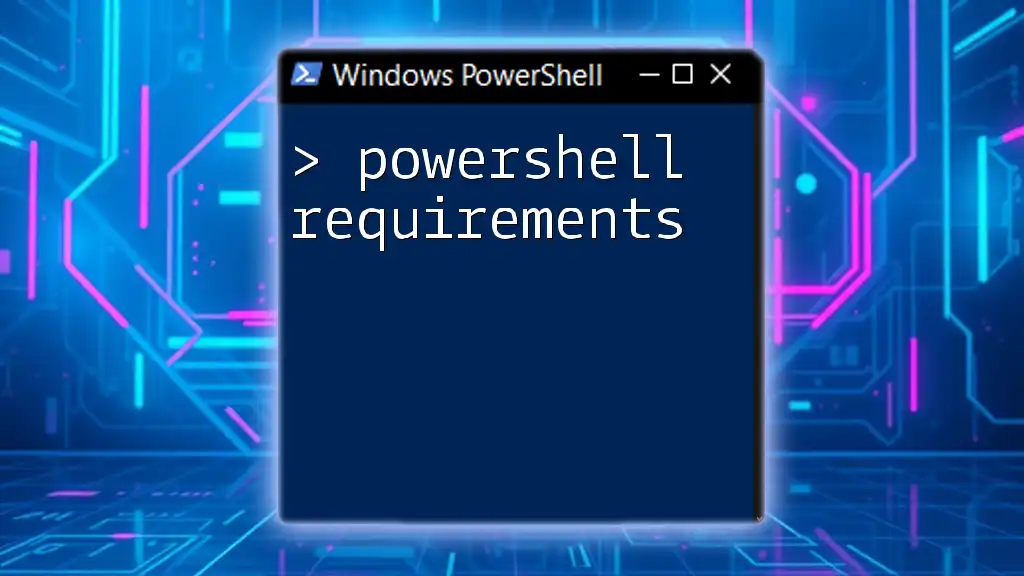
Troubleshooting Common Issues
Authentication Errors
One of the most common issues when using `New-PSDrive` with credentials is authentication failure. This can occur for several reasons, such as:
- Incorrect username or password
- The user account lacking permissions to access the specified path
To resolve such errors, double-check the credentials used, or verify the account’s permissions on the resource.
Performance Issues
If you experience performance slowdowns when accessing network drives, consider:
- Reviewing network speed between your machine and the resource
- Analyzing the load on the server hosting the drive
Sometimes, optimizing the network path or reducing the number of concurrent connections can significantly improve performance.
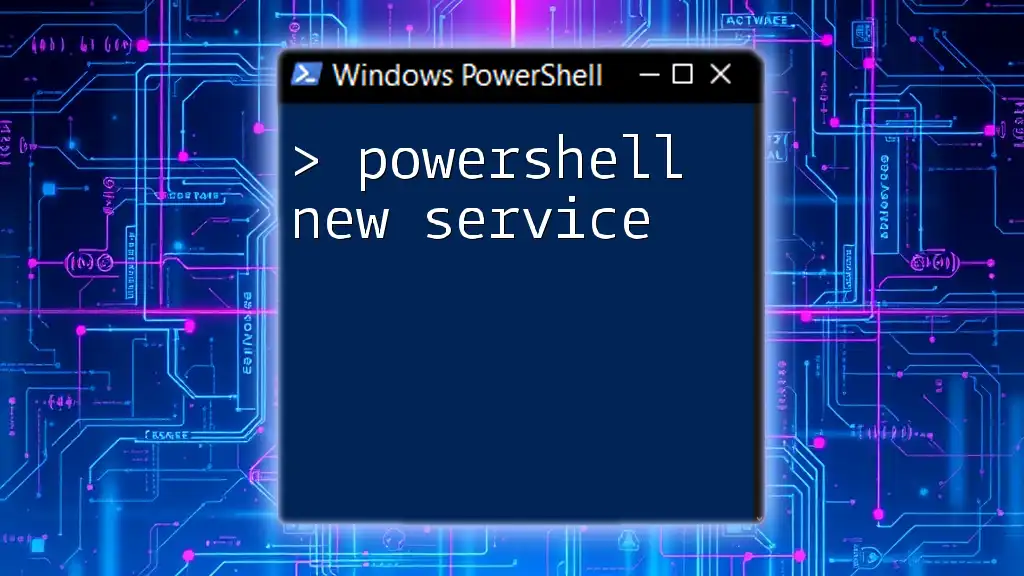
Conclusion
In summary, understanding how to use PowerShell's `New-PSDrive` with credentials is essential for effective resource management in any PowerShell environment. By practicing secure credential management and implementing best practices, you can ensure a smooth and secure experience when accessing various data stores.
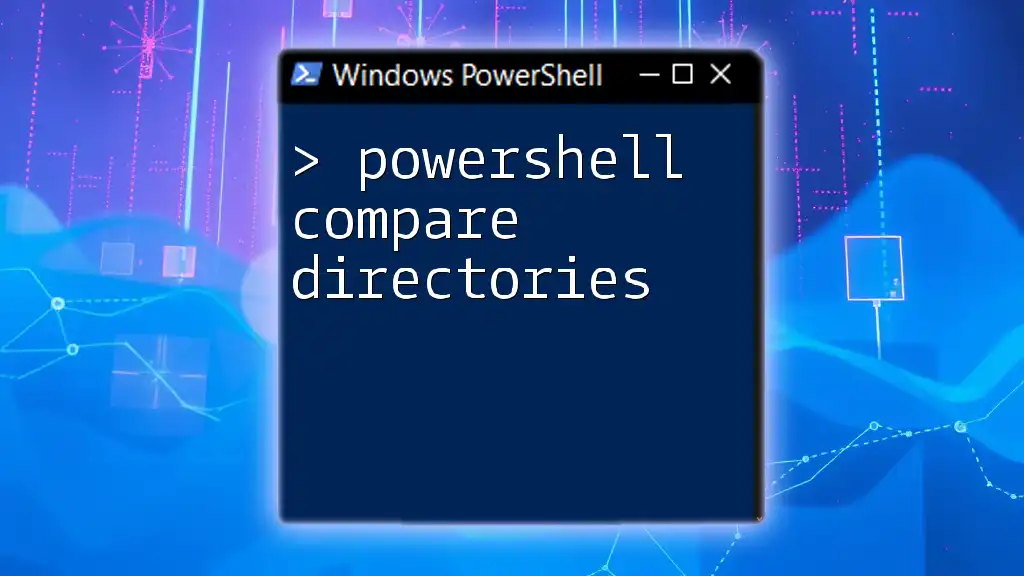
Additional Resources
For further learning, consult the official Microsoft PowerShell documentation, and consider exploring community forums and courses that offer insights and hands-on practice with PowerShell commands and techniques.

